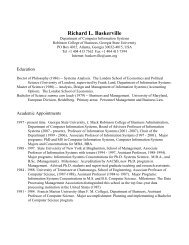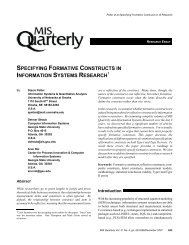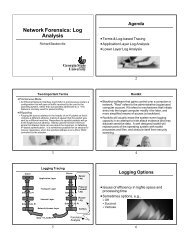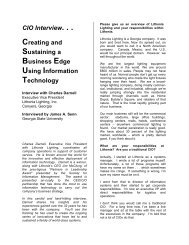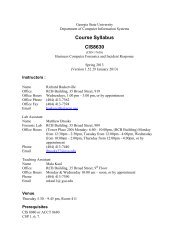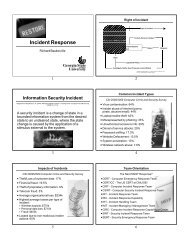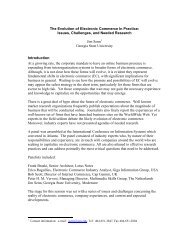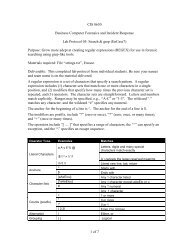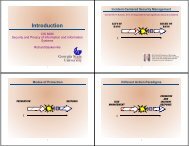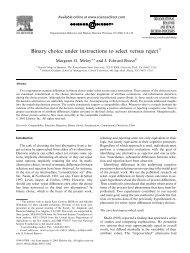The Relative Importance of Perceived Ease of Use in IS Adoption: A ...
The Relative Importance of Perceived Ease of Use in IS Adoption: A ...
The Relative Importance of Perceived Ease of Use in IS Adoption: A ...
Create successful ePaper yourself
Turn your PDF publications into a flip-book with our unique Google optimized e-Paper software.
helps users achieve task-related objectives, such as task efficiency andeffectiveness.Accord<strong>in</strong>gly, the study theorizes that PEOU directly affects IT adoption onlywhen the primary task for which the IT is deployed is directly associated with<strong>in</strong>tr<strong>in</strong>sic IT characteristics, such as when the task itself is an <strong>in</strong>tegral part <strong>of</strong> an IT<strong>in</strong>terface. Extend<strong>in</strong>g this proposition to e-commerce, it was hypothesized that whena Web site is used to purchase products, PEOU would not affect IT adoptionbecause IT ease-<strong>of</strong>-use is not an <strong>in</strong>herent quality <strong>of</strong> the purchased product. On theother hand, when the Web site is used to <strong>in</strong>quire about products, PEOU shouldaffect IT adoption because the required <strong>in</strong>formation is embedded <strong>in</strong> the IT and thusits quality is directly related to IT ease-<strong>of</strong>-use. Data collected from 217 subjects <strong>in</strong>a free simulation experiment support these hypotheses. Implications for future Webdevelopment and theoretical ref<strong>in</strong>ements are discussed.Keywords: Technology acceptance model, TAM, e-commerce, perceivedease <strong>of</strong> use, PEOU, perceived usefulness, PU, IT adoption, diffusion <strong>of</strong> <strong>in</strong>novationtheory, Web development, system use, <strong>in</strong>tr<strong>in</strong>sic and extr<strong>in</strong>sic tasksI. INTRODUCTIONS<strong>in</strong>ce its <strong>in</strong>troduction, the technology acceptance model (Davis 1989; Daviset al. 1989)—TAM—has received considerable attention <strong>in</strong> the IT community.Recent studies suggest it applies also to e-commerce and to the adoption <strong>of</strong>Internet technology (Gefen 1997). In essence, TAM posits that IT adoption isaffected by prior use-related beliefs. TAM identified two such beliefs: perceivedusefulness (PU) and perceived ease <strong>of</strong> use (PEOU). <strong>The</strong> former is “the degree towhich a person believes that us<strong>in</strong>g a particular system would enhance his or her jobperformance” (Davis 1989, p. 320); while the latter is “the degree to which a personbelieves that us<strong>in</strong>g a particular system would be free <strong>of</strong> effort” (Davis 1989, p. 320).<strong>The</strong>se two beliefs create a favorable disposition or <strong>in</strong>tention toward us<strong>in</strong>g the IT thatconsequently affects its self-reported use (Davis et al. 1989).Journal <strong>of</strong> the Association for Information Systems 2



